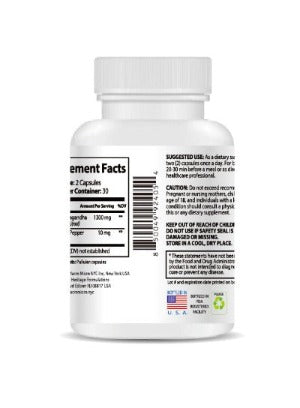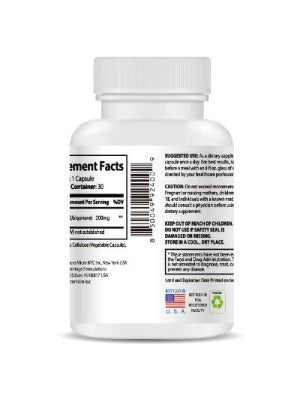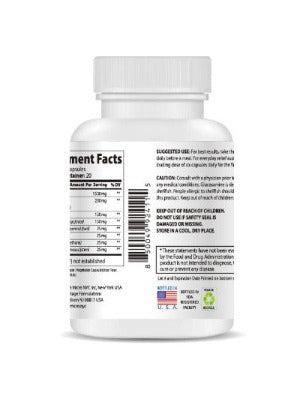Why Dry Eye Syndrome Is More Common Than You Think: A Comprehensive Guide to Causes, Symptoms, and Relief in 2025
In 2025, the prevalence of dry eye syndrome (DES) continues to rise, impacting millions globally and significantly affecting quality of life. While many dismiss occasional eye dryness, the reality is that DES is a chronic condition with long-term consequences if left unmanaged. This comprehensive guide explores the causes, symptoms, and effective strategies for relief, including the role of innovative products like the Wise Quest Soothing Eye Patches - 3-Month Wellness Pack.
The Alarming Statistics of Dry Eye Syndrome in 2025
Recent studies reveal a startling increase in DES cases. This isn't merely a matter of occasional discomfort; chronic DES can lead to persistent inflammation, vision impairment, and a reduced quality of life. The numbers highlight the urgent need for increased awareness, proactive management, and improved treatment options. The impact extends beyond individual suffering, affecting productivity and healthcare costs significantly.
Unraveling the Causes: The Perfect Storm Behind Dry Eye Syndrome
Several interconnected factors contribute to the growing prevalence of DES. These often work synergistically, creating a "perfect storm" that disrupts the delicate balance of the ocular surface. Understanding these factors is crucial for prevention and effective treatment.
- The Digital Age and Increased Screen Time: Our hyper-connected world demands prolonged screen time, drastically reducing blink rates. This leads to insufficient tear film distribution and evaporative dry eye, contributing significantly to DES prevalence.
- Environmental Impact: Environmental factors exacerbate DES symptoms. Dry air from heating and air conditioning systems, wind, and even extreme temperatures accelerate tear evaporation, particularly in specific geographical regions and seasons. Air pollution further irritates already sensitive eyes.
- Medications and Underlying Health Conditions: Many medications, including antihistamines, diuretics, and antidepressants, list dry eye as a potential side effect. Additionally, various systemic diseases, such as Sjogren's syndrome and rheumatoid arthritis, are strongly associated with DES, making it a secondary complication.
- Aging and Hormonal Changes: As we age, tear production naturally declines, making older adults more susceptible. Hormonal fluctuations in women, especially during menopause, further disrupt tear production and contribute to the development or worsening of DES.
- Lifestyle Factors: Poor diet, lack of sleep, and insufficient hydration can all negatively impact tear production and overall eye health, increasing the risk of DES.
Recognizing the Signs: A Comprehensive Look at Dry Eye Symptoms
DES symptoms vary in severity and presentation, from subtle discomfort to significant vision problems. Early detection and diagnosis are vital for effective management. Knowing the symptoms allows for timely intervention and prevents potential complications.
- Burning, Stinging, and Irritation: A consistent burning, stinging, or gritty sensation in the eyes is a hallmark symptom.
- Dryness, Itchiness, and Foreign Body Sensation: Many individuals experience a persistent feeling of dryness, itchiness, and the sensation of having something in their eyes.
- Blurred Vision and Fluctuating Acuity: Reduced tear lubrication leads to fluctuating blurred vision, particularly when focusing on tasks requiring visual concentration.
- Light Sensitivity (Photophobia): Increased sensitivity to light is a common complaint among individuals with DES.
- Eye Fatigue and Strain: Prolonged eye strain and fatigue are often associated with DES, particularly in individuals with demanding visual tasks.
- Excessive Tearing (Paradoxical Tearing): Ironically, sometimes excessive tearing occurs as a reflex response to the irritation caused by the dryness.
- Redness and Inflammation: Chronic DES can lead to noticeable redness and inflammation of the eyes.
Effective Management Strategies: A Multifaceted Approach to Relief
Managing DES requires a comprehensive approach, incorporating lifestyle changes, environmental adjustments, and, in some cases, medical interventions. This holistic approach combines several strategies for optimal relief.
- Lifestyle Modifications: Reducing screen time, maintaining proper hydration, adopting a healthy diet rich in omega-3 fatty acids, and ensuring adequate sleep are crucial lifestyle adjustments.
- Environmental Control: Using a humidifier, especially during dry seasons, minimizing exposure to wind and extreme temperatures, and ensuring proper ventilation can make a significant difference.
- Artificial Tears and Lubricants: Over-the-counter artificial tears provide temporary relief by lubricating the eyes. Prescription-strength lubricants may be necessary for chronic DES.
- Warm Compresses and Eyelid Hygiene: Applying warm compresses to the eyelids and practicing regular eyelid hygiene helps to remove debris and improve tear film quality.
- Medications: In some cases, prescription eye drops or medications may be necessary to treat underlying conditions or alleviate severe symptoms.
- Innovative Products: Products like the Wise Quest Soothing Eye Patches - 3-Month Wellness Pack offer a convenient and effective way to supplement your treatment strategy. These non-toxic patches, crafted with natural ingredients, provide long-term relief from dryness and strain.
Introducing Wise Quest Soothing Eye Patches: A 3-Month Journey to Healthier Eyes
The Wise Quest Soothing Eye Patches - 3-Month Wellness Pack offers a convenient and effective solution for managing chronic dry eye syndrome. This comprehensive pack provides a three-month supply of soothing, non-toxic patches designed to relieve dryness, strain, and irritation. Crafted with nature's finest ingredients, these patches offer a safe and gentle approach to long-term eye health for those spending extended hours on screens or experiencing environmental dryness. The pack is a valuable addition to your DES management routine.

Beyond the Patches: A Holistic Approach to Long-Term Eye Health
While products like the Wise Quest Soothing Eye Patches provide significant relief, it's crucial to adopt a holistic approach for long-term eye health. This includes regular eye exams, proactive management of underlying conditions, and a commitment to a healthy lifestyle.
Regular visits to your ophthalmologist are crucial for early diagnosis and treatment of any eye conditions, including DES. They can assess your specific needs, recommend appropriate therapies, and monitor your progress. Your ophthalmologist may suggest additional treatments like punctal plugs or other medical interventions if necessary. This proactive approach is key to preventing complications and maintaining optimal eye health.
Taking Control of Your Vision: A Call to Action
Dry eye syndrome is a common and treatable condition that affects millions. By understanding its causes, recognizing its symptoms, and embracing a comprehensive management strategy that includes lifestyle modifications, environmental adjustments, and the use of supportive products like the Wise Quest Soothing Eye Patches, you can significantly improve your eye health and quality of life. Don't let DES control your vision; take proactive steps towards healthier, more comfortable eyes.









